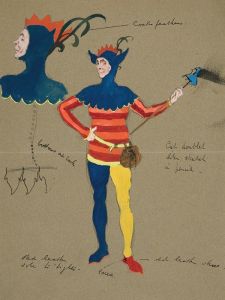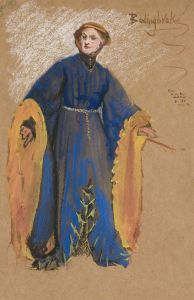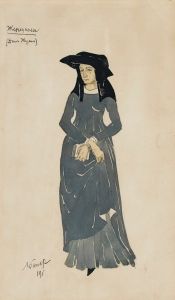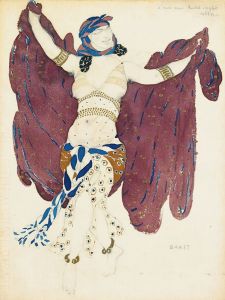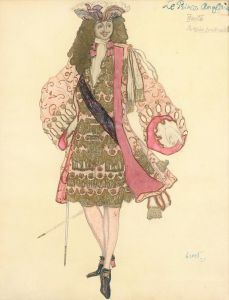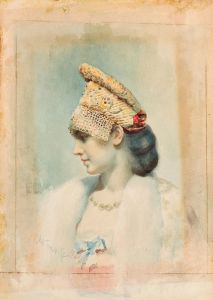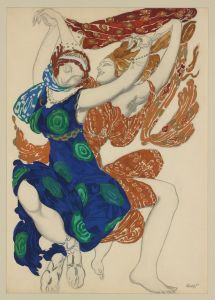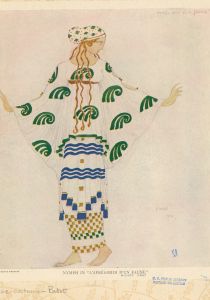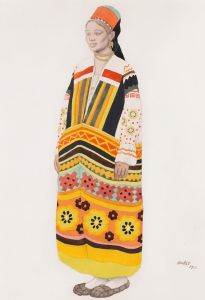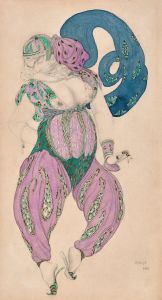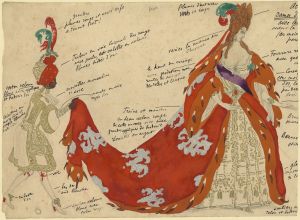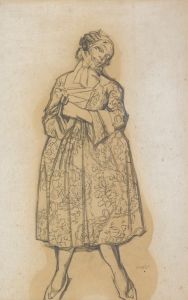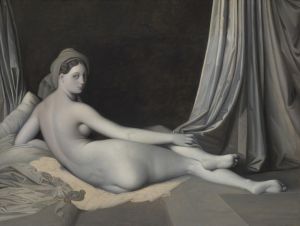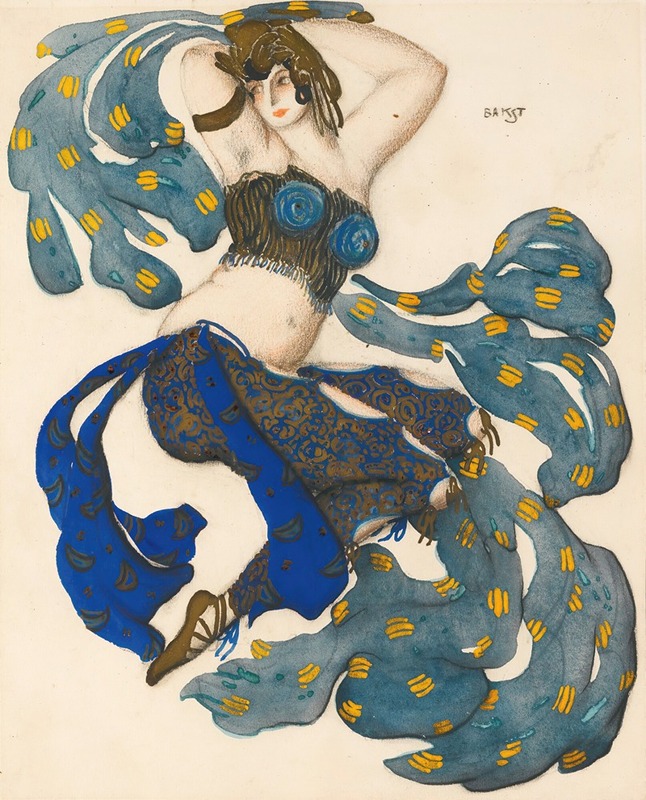
Costume Design For An Odalisque In Sheherezade
A hand-painted replica of Léon Bakst’s masterpiece Costume Design For An Odalisque In Sheherezade, meticulously crafted by professional artists to capture the true essence of the original. Each piece is created with museum-quality canvas and rare mineral pigments, carefully painted by experienced artists with delicate brushstrokes and rich, layered colors to perfectly recreate the texture of the original artwork. Unlike machine-printed reproductions, this hand-painted version brings the painting to life, infused with the artist’s emotions and skill in every stroke. Whether for personal collection or home decoration, it instantly elevates the artistic atmosphere of any space.
Léon Bakst's "Costume Design for an Odalisque in Scheherazade" is a celebrated work of theatrical design created in 1910 for Sergei Diaghilev's Ballets Russes production of Scheherazade. The ballet, based on a symphonic suite by Nikolai Rimsky-Korsakov and inspired by the One Thousand and One Nights tales, premiered on June 4, 1910, at the Théâtre National de l'Opéra in Paris. Bakst's designs for the production, including this particular costume, are widely regarded as revolutionary for their bold use of color, intricate patterns, and exotic themes, which contributed significantly to the visual and cultural impact of the performance.
The costume design depicts an odalisque, a female figure associated with the harem setting central to the ballet's narrative. Bakst's work reflects the Orientalist aesthetic popular in Europe at the time, characterized by a fascination with the art, culture, and imagined opulence of the Middle East and Asia. The design features vibrant hues, including rich blues, golds, and reds, as well as elaborate ornamentation and flowing fabrics. These elements were intended to evoke a sense of luxury and sensuality, aligning with the ballet's themes of passion, betrayal, and exoticism.
Bakst's designs for Scheherazade were instrumental in establishing his reputation as one of the foremost theatrical designers of the early 20th century. His innovative approach to costume and set design emphasized the integration of visual art with performance, creating a cohesive and immersive aesthetic experience. The costumes, including the one for the odalisque, were meticulously crafted to enhance the dancers' movements while also serving as standalone works of art.
The success of Scheherazade and Bakst's designs had a lasting influence on both the performing arts and the broader art and fashion worlds. The production's opulent visual style inspired designers, artists, and audiences, contributing to the development of the Art Deco movement and a renewed interest in Orientalist motifs.
Today, Bakst's costume designs, including "Costume Design for an Odalisque in Scheherazade," are celebrated as masterpieces of theatrical art. The original sketches and designs are housed in various museum collections, where they continue to be studied and admired for their artistic and historical significance.





